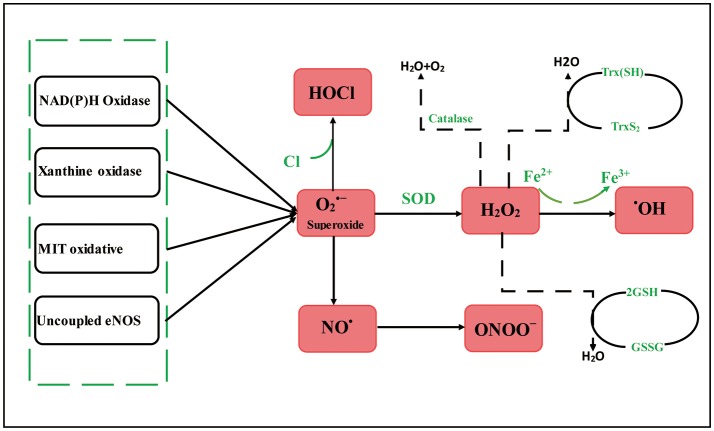Figure 1.
Reactive oxygen species–producing systems in atherosclerosis. MIT oxidative, Mitochondrial oxidative; eNOS, endothelial nitric oxide synthase; , superoxide; OX, xanthine oxidase; NO•, nitric oxide; HOCl, hypochlorite; H2O2, hydrogen peroxide; ONOO−, peroxynitrite; •OH, hydroxyl radicals; SOD, enzyme superoxide dismutase; GSH, glutathione; Trx, thioredoxin. can be generated in the blood vessel wall by NOXs, uncoupled eNOS, OX, and mitochondrial respiration chains. H2O2 can traverse spontaneous transformation to •OH by Fe reaction, SOD. H2O2 can be detoxified through GSH peroxidase, Trx peroxidase, and catalase to H2O and O2. Meanwhile, the myeloperoxidase enzyme can employ H2O2 to oxygenize chloride to the strong oxidizer HOCl. The uncoupling eNOS decreases endothelial NO production, which is further aggravated by reduced eNOS expression and activity.

